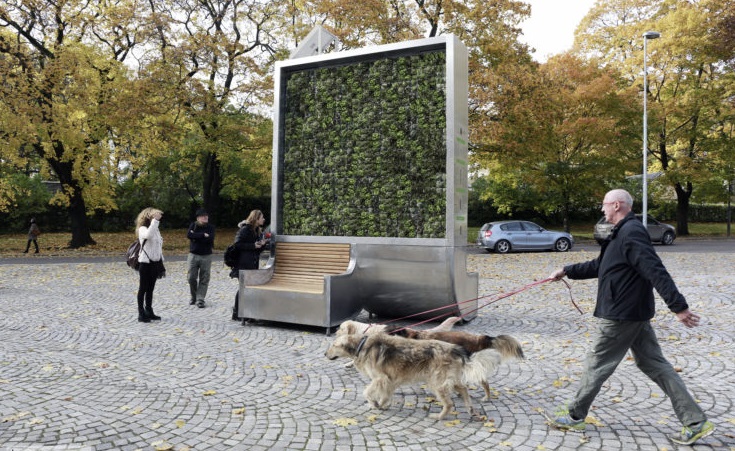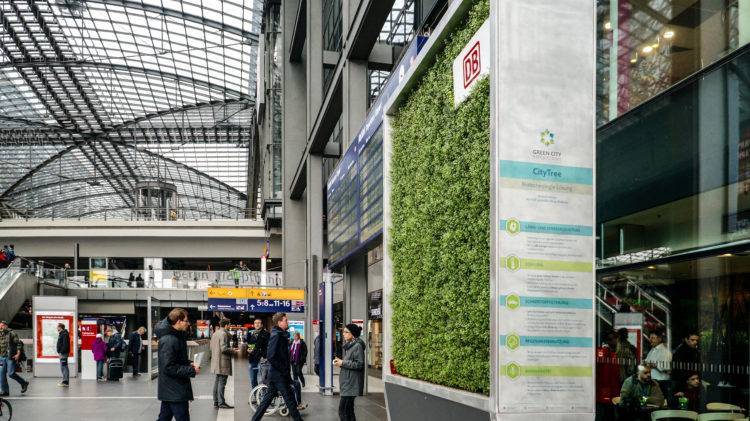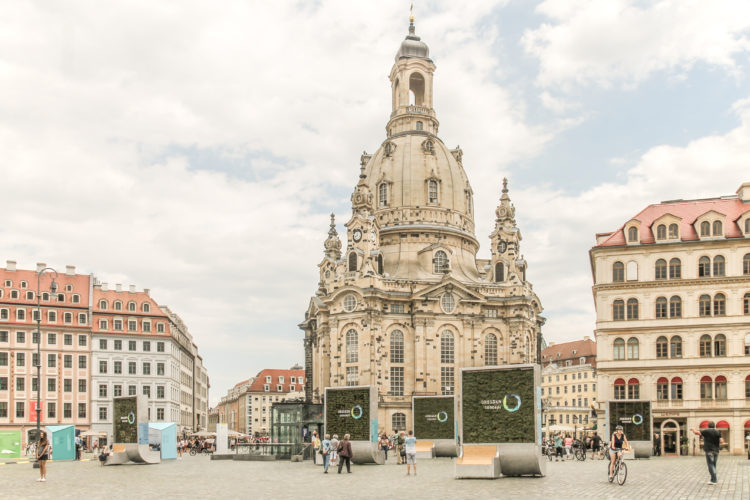CityTrees
In March 2018 a 'CityTree' was installed on London's Glasshouse Street, near Piccadilly Circus to highlight the risks of air pollution. This coincided with the publication of a joint report by four Parliamentary select committees which concluded that UK air pollution causes 40,000 deaths and costs the economy £20 billion a year.
Green City Solutions, Proambiente and the Italian city of Modena joined forces in Spring 2017 to initiate the ‘CityTree Scaler’; a project supported by Climate-KIC Germany (the biggest EU innovation initiative for climate-friendly technologies). The consortium was formed to prove the effectiveness of a new smart biotechnological filter for tackling urban air pollution.
The consortium have also installed six CityTrees on the most polluted street in Modena.
Developed by German start-up, Green City Solutions, CityTrees combine cutting-edge internet of things (IoT) technology with moss cultures and plants that ‘eat’ air pollution. They claim that a CityTree has the same environmental impact as 275 urban trees but requires only 3 sq. m of space.
The sculptural structures contain plants capable of removing dust, nitrogen dioxide and ozone from the air. The units are also remarkably self-sufficient. IoT sensors measure environmental data, and solar panel technology and a rainwater collecting system, mean that the nutrition, water and minerals required by the plants can be regulated automatically, requiring only a few hours maintenance a year.
WiFi, iBeacon, NFC and digital screens also allow CityTrees to transmit digital and visual information, and companies can pay to advertise on them by adding lighting, logos or LED panels.
The technology behind the CityTree is a result of more than a decade’s research at the Dresden University of Technology, Lancaster University and University of Bonn. It is hoped that the project will prove CityTrees offset 240 tonnes of CO2 equivalents a year.
Victor Splittgerber, CTO and co-founder of Green City Solutions, said: “The project will help us to obtain important insights of the effectiveness of our smart plant filters. The results will help us to prove the estimated results of the laboratory tests. We see the CityTree as an essential part of future environmental urban planning. Therefore the next logical step is the testing over a longer period under real urban conditions."
For more information, see Green City Solutions.
Content and images courtesy of Green City Solutions.
[edit] Related articles on Designing Buildings Wiki
Featured articles and news
The UK's Modern Industrial Strategy: A 10 year plan
Previous consultation criticism, current key elements and general support with some persisting reservations.
Building Safety Regulator reforms
New roles, new staff and a new fast track service pave the way for a single construction regulator.
Architectural Technologist CPDs and Communications
CIAT CPD… and how you can do it!
Cooling centres and cool spaces
Managing extreme heat in cities by directing the public to places for heat stress relief and water sources.
Winter gardens: A brief history and warm variations
Extending the season with glass in different forms and terms.
Restoring Great Yarmouth's Winter Gardens
Transforming one of the least sustainable constructions imaginable.
Construction Skills Mission Board launch sector drive
Newly formed government and industry collaboration set strategy for recruiting an additional 100,000 construction workers a year.
New Architects Code comes into effect in September 2025
ARB Architects Code of Conduct and Practice available with ongoing consultation regarding guidance.
Welsh Skills Body (Medr) launches ambitious plan
The new skills body brings together funding and regulation of tertiary education and research for the devolved nation.
Paul Gandy FCIOB announced as next CIOB President
Former Tilbury Douglas CEO takes helm.
UK Infrastructure: A 10 Year Strategy. In brief with reactions
With the National Infrastructure and Service Transformation Authority (NISTA).
Ebenezer Howard: inventor of the garden city. Book review.
The Grenfell Tower fire, eight years on
A time to pause and reflect as Dubai tower block fire reported just before anniversary.
Airtightness Topic Guide BSRIA TG 27/2025
Explaining the basics of airtightness, what it is, why it's important, when it's required and how it's carried out.
Construction contract awards hit lowest point of 2025
Plummeting for second consecutive month, intensifying concerns for housing and infrastructure goals.
Understanding Mental Health in the Built Environment 2025
Examining the state of mental health in construction, shedding light on levels of stress, anxiety and depression.
























